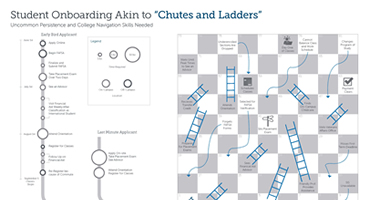Do Legacy Admissions Policies Impact Enrollment Equity?
Title: Legacy Looms Large in College Admissions, Perpetuating Inequities in College Access
Authors: Marián Vargas and Sean Tierney
Source: Institute for Higher Education Policy
In 2023, the Supreme Court ruling on the consideration of race in admissions illuminated a similar conversation about admissions equity: legacy status. The newest release of data on the Integrated Postsecondary Education Data System included, for the first time, data on institutions’ legacy admission policies, and the Institute for Higher Education Policy examines this data in a new report.
The data reveal that legacy admissions policies are prevalent across selective postsecondary institutions and their impacts are far-reaching, with 2.1 million students attending institutions that consider legacy status. For the purposes of this analysis, the authors qualify “selective” as not having open-access admissions.
Key insights from this report include:
- For first-time students enrolling in fall 2022, legacy status was a factor in admissions at 32 percent of selective four-year institutions. Among these universities, 42 percent of private nonprofit institutions and 15 percent of public institutions consider legacy status.
- In the 2021-22 academic year, a higher proportion of Black students (14 percent) and Hispanic or Latino students (15 percent) enrolled at selective institutions that do not consider legacy status in admissions, compared to institutions that do consider alumni relationships (11 and 12 percent, respectively).
- In contrast, White student enrollment was higher at selective institutions with legacy admissions policies (59 percent) than at institutions without these policies (51 percent). The disparity between enrollment at institutions with and without legacy admissions is highest among White students (8 percentage points, compared to 3 percentage points among Black and Hispanic or Latino students).
- Students whose parents have not attended any postsecondary education, otherwise known as first-generation students, are implicitly excluded from these policies.
- Students receiving the Pell Grant enrolled at selective four-year institutions that do not consider legacy status at a higher rate (42 percent) than at institutions that do consider legacy status (36 percent).
The new data on legacy admissions policies are an important step toward understanding and correcting the admissions mystery. The authors suggest that institutions consider first-generation and socioeconomic status instead of legacy status. In addition, expanding data availability is essential to continue solving this puzzle. The Department of Education has previously proposed that application and admissions data be collected and disaggregated by race and ethnicity. This data would allow administrators and policymakers to pinpoint the specific equity and access issues that legacy admissions policies pose and how to rectify them.
To read the full report, click here.
—Erica Swirsky
If you have any questions or comments about this blog post, please contact us.


